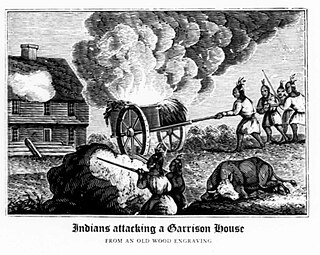 W
WKing Philip's War was an armed conflict in 1675–1678 between indigenous inhabitants of New England and New England colonists and their indigenous allies. The war is named for Metacom, the Wampanoag chief who adopted the name Philip because of the friendly relations between his father Massasoit and the Mayflower Pilgrims. The war continued in the most northern reaches of New England until the signing of the Treaty of Casco Bay in April 1678.
 W
WThe American Indian Wars, also known as the American Frontier Wars, the First Nations Wars in Canada, and the Indian Wars, were fought by European governments and colonists, and later by the United States and Canadian governments and American and Canadian settlers, against various American Indian and First Nation tribes. These conflicts occurred in North America from the time of the earliest colonial settlements in the 17th century until the early 20th century. The various wars resulted from a wide variety of factors. The European powers and their colonies also enlisted allied Indian tribes to help them conduct warfare against each other's colonial settlements. After the American Revolution, many conflicts were local to specific states or regions and frequently involved disputes over land use; some entailed cycles of violent reprisal.
 W
WAnawan Rock is a colonial historic site in Rehoboth, Massachusetts. It is a large dome of conglomerate rock (puddingstone) located off Winthrop Street in a wooded site reached by a short footpath. The site was added to the National Register of Historic Places in 1983.
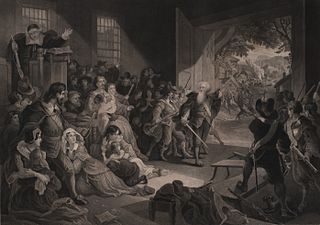 W
WThe Angel of Hadley is the central character in a possibly apocryphal tale combining the execution of Charles I in England, King Philip's War and Hadley, Massachusetts. According to the tale General William Goffe, who was wanted for his role in the regicide, was hiding in Hadley when it was attacked by Indians in 1675 or 1676. Goffe, by then an aging figure, is said to have come out of his hiding to lead the local residents in the successful defense of their community against the attack.
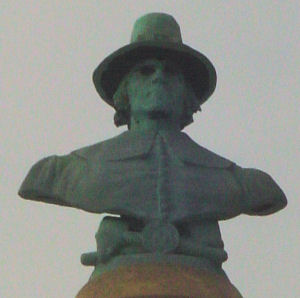 W
WJames Avery was an American colonial landowner, legislator, and a military commander in King Philip's War.
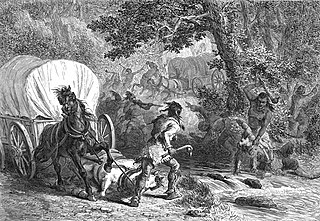 W
WThe Battle of Bloody Brook was fought on September 18, 1675 OS between English colonial militia from the Massachusetts Bay Colony and a band of Indians led by the Nipmuc sachem Muttawmp, during King Philip's War. The Indians ambushed colonists escorting a train of wagons carrying the harvest from Deerfield to Hadley, and killed at least 40 militia men and 17 teamsters out of a company that included 79 militia.
 W
WBristol is a town in Bristol County, Rhode Island, as well as the historic county seat. The town is built on the traditional territories of the Pokanoket Wampanoag. It is a deep-water seaport named after Bristol, England.
 W
WBenjamin Church was an English colonist in North America. He was a military leader of the historic predecessor of the United States Army Rangers, captain of the first Ranger force in America (1675). Church was commissioned by Josiah Winslow, the Governor of the Plymouth Colony, to form the first ranger company for King Philip's War. He later commanded the company to raid Acadia during King William's and Queen Anne's wars in the early 1700s, as French and English hostilities played out in North America. The two powers were competing for control in colonial territories. He was promoted to major and ended his service at the rank of colonel, as noted on his gravestone.
 W
WThe Great Swamp Fight or the Great Swamp Massacre was a crucial battle fought during King Philip's War between the colonial militia of New England and the Narragansett tribe in December 1675. It was fought near the villages of Kingston and West Kingston in the Colony of Rhode Island and Providence Plantations. The combined force of the New England militia included 150 Pequots, and they inflicted a huge number of Narragansett casualties, including many hundred women and children. The battle has been described as "one of the most brutal and lopsided military encounters in all of New England's history." Since the 1930s, Narragansett and Wampanoag people commemorate the battle annually in a ceremony initiated by Narragansett-Wampanoag scholar Princess Red Wing.
 W
WJohn Hoar was a militia leader & Indian liaison in colonial Massachusetts during King Philip's War. He is best known for securing the release of Mary Rowlandson from Indian captivity at Redemption Rock. The event was depicted in the best selling book The Sovereignty and Goodness of God: Being a Narrative of the Captivity and Restoration of Mrs. Mary Rowlandson.
 W
WKing Philip's Hill is a historic site off Old Bernardston Road in Northfield, Massachusetts. In 1675 the Wampanoag chief Metacom, colloquially called "King Philip" by English colonists, is claimed to have held council here during King Philip's War. The hill has evidence of what appears to be trenches and other remnants of fortification from the time, but the exact nature of these is debatable; 19th century area historian George Sheldon believed the trenches to be the work of a colonist.
 W
WThe Lancaster Raid was the first in a series of five planned raids on English colonist towns during the winter of 1675 as part of King Philip's War. Metacom, known by English colonists as King Philip, was a Wampanoag sachem involved in leading and organizing Wampanoag warriors during the war. Teaming up with Nipmucs and Narragansetts, Wampanoag warriors were able to successfully raid the town of Lancaster, securing provisions and prisoners to help them carry onward into their winter offensive.
 W
WMetacomet, also known as Pometacom, Metacom, and by his adopted English name King Philip, was sachem to the Wampanoag people and the second son of the sachem Massasoit. Metacom became sachem in 1662 when his brother Wamsutta died shortly after the death of their father. Wamsutta's widow Weetamoo, squa sachem of the Pocasset, was Metacom's ally and friend for the rest of his life. Metacom married Weetamoo's younger sister Wootonekanuske. It is unclear how many children they had or what happened to them. Wootonekanuske and one of their sons were sold to slavery in the West Indies following the defeat of the Native Americans in what became known as King Philip's War.
 W
WMount Hope is a small hill in Bristol, Rhode Island overlooking the part of Narragansett Bay known as Mount Hope Bay. It is the highest point in Bristol County, RI. The 7000 acres that now make up the Town of Bristol in Rhode Island were called the Mt. Hope Lands. The elevation of Mt. Hope summit is 209 feet, and drops sharply to the bay on its eastern side. Mount Hope was the site of a Wampanoag (Pokanoket) village. It is remembered for its role in King Philip's War.
 W
WThe Narragansett people are an Algonquian American Indian tribe from Rhode Island. The tribe was nearly landless for most of the 20th century, but it worked to gain federal recognition and attained it in 1983. It is officially the Narragansett Indian Tribe of Rhode Island and is made up of descendants of tribal members who were identified in an 1880 treaty with the state.
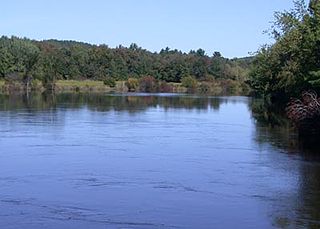 W
WThe Nashaway were a tribe of Algonquian Indians inhabiting the upstream portions of the Nashua River valley in what is now the northern half of Worcester County, Massachusetts, mainly in the vicinity of Sterling, Lancaster and other towns near Mount Wachusett. The meaning of Nashaway is "river with a pebbled bottom".
 W
WNine Men's Misery is a site in current day Cumberland, Rhode Island, where nine colonists were tortured by the Narragansett Indian tribe during King Philip's War. A stone memorial was constructed in 1676 which is believed to be the oldest veterans memorial in the United States.
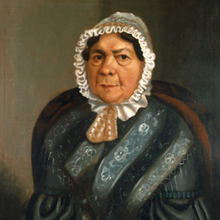 W
WThe Nipmuc or Nipmuck people are an Indigenous people of the Northeastern Woodlands, who historically have spoken an Algonquin language.
 W
WPraying towns were developed by the Puritans of New England from 1646 to 1675 in an effort to convert the local Native American tribes to Christianity. The Natives who moved into these towns were known as Praying Indians. Before 1674 the villages were the most ambitious experiment in converting Native Americans to Christianity in the Thirteen Colonies. John Eliot learned Massachusett and first preached to the Natives in their own language in 1646 at Nonantum, meaning "place of rejoicing." Newton developed here. This sermon led to a friendship with Waban, who became the first Native American in Massachusetts to convert to Christianity.
 W
WQuinnatisset was a Nipmuc village in Connecticut which became a praying town through the influence of John Eliot and Daniel Gookin. The town was located near what is now Thompson, Connecticut or Pomfret, Connecticut possibly near Thompson Hill Historic District. The name "Quantisset" means "little long river."
 W
WThomas Savage was a soldier and merchant in colonial New England who attained the rank of major during King Philip's War.
 W
WSmith's Castle, built in 1678, is a house museum at 55 Richard Smith Drive, near Wickford, a village in North Kingstown, Rhode Island, United States. Smith's Castle is one of the oldest houses in the state. It was designated a National Historic Landmark in 1993 as Cocumscussoc Archeological Site, due to the artifacts and information digs in the vicinity have yielded. It is located just off U.S. 1.
 W
WThe Siege of Springfield was a conflict around the colonial settlement of Springfield, Massachusetts during King Philip's War. Springfield was the second New England settlement burned to the ground during the war, following Providence Plantations. King Philip's War remains, per capita, the bloodiest war in American history.
 W
WThe Sudbury Fight was a battle of King Philip's War, fought in what is today Sudbury and Wayland, Massachusetts, when approximately five hundred Wampanoag, Nipmuc, and Narragansett Native Americans raided the frontier settlement of Sudbury in Massachusetts Bay Colony. Disparate companies of English militiamen from nearby settlements marched to the town's defense, two of which were drawn into Native ambushes and suffered heavy losses. The battle was the last major Native American victory in King Philip's War before their final defeat in southern New England in August 1676.
 W
WTantamous was a well-known Native American Nipmuc leader in seventeenth century Massachusetts. Tantamous was a powwow who lived near the Assabet River, later in Nobscot. Tantamous "...may have gotten his English name for his good advice."
 W
WThe Battle of Turner's Falls or Battle of Great Falls; also known as the Peskeompscut massacre or the "Wissantinnewag massacre", was fought on May 19, 1676, during King Philip's War, in present-day Gill, Massachusetts, near a falls on the Connecticut River. The site is across the river from the village of Turners Falls. This was one of the most important conflicts of King Philip's War, as it marked a turning point in the conflict that would eventually lead to the war's end.
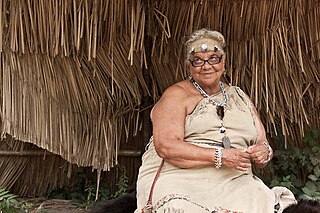 W
WThe Wampanoag, also rendered Wôpanâak, are a Native American people. They were a loose confederation of several tribes in the 17th century, but today Wampanoag people encompass five officially recognized tribes. The Mashpee Wampanoag Tribe and the Wampanoag Tribe of Gay Head in Massachusetts are federally recognized, and the Herring Pond, Assawompsett-Nemasket Band of Wampanoags, and Pocasset Wampanoag Tribe (Pokonoket) are recognized by the Commonwealth of Massachusetts. They lived in southeastern Massachusetts and Rhode Island in the beginning of the 17th century, at the time of first contact with the English colonists, a territory that included the islands of Martha's Vineyard and Nantucket. Their population numbered in the thousands; 3,000 Wampanoag lived on Martha's Vineyard alone.
 W
WWeetamoo, also referred to as Weethao, Weetamoe, Wattimore, Namumpum, and Tatapanunum, was a Pocasset Wampanoag Native American Chief. She was the sunksqua, or female sachem, of Pocasset tribe, which occupied contemporary Tiverton, Rhode Island in 1620.
 W
WWheeler's Surprise, and the ensuing Siege of Brookfield, was a battle between Nipmuc Indians under Muttawmp, and the English of the Massachusetts Bay Colony under the command of Thomas Wheeler and Captain Edward Hutchinson, in August 1675 during King Philip's War. The battle consisted of an initial ambush by the Nipmucs on Wheeler's unsuspecting party, followed by an attack on Brookfield, Massachusetts, and the consequent besieging of the remains of the colonial force. While the place where the siege part of the battle took place has always been known, the location of the initial ambush was a subject of extensive controversy among historians in the late nineteenth century.
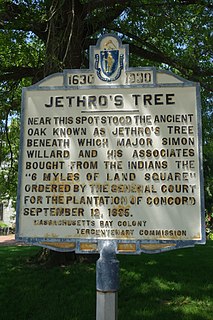 W
WSimon Willard (1605–1676) was an early Massachusetts fur trader, colonial militia leader, legislator, and judge.
 W
WJosiah Winslow was the 13th Governor of Plymouth Colony. In records of the time, historians also name him Josias Winslow, and modern writers have carried that name forward. He was born one year after the Charter which founded the Massachusetts Bay Colony, bringing over 20,000 English immigrants to New England in the 1630s. Josiah was the Harvard College-educated son of Mayflower passenger and Pilgrim leader Edward Winslow and was Governor from 1673 to 1680. The most significant event during his term in office was King Philip's War, which created great havoc for both the English and Indian populations and changed New England forever. Josiah was the first native-born governor of an American Colony.